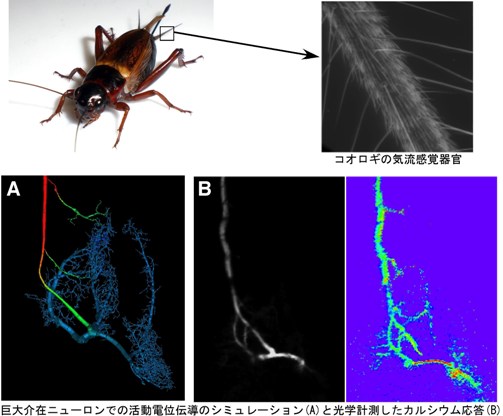OGAWA, HirotoProfessor
System Architecture of Brain
Neural system underlying animal behavior is one of the most elaborate and mysterious subjects in developing life science. Difficulty of understanding the brain function results from not only structure complexity but also characteristics of which ‘information processing’ is not simply resolved by component of the brain such as molecules and cells. To understand the brain function, therefore, we need to demonstrate both ‘system architecture’ and ‘operation principle’ across different levels in the neural system, for example, crosstalk between of second-messenger dynamics and individual nerve-cell response, and relationship between ensemble activity pattern of neuronal network and its representing information. We focus the level from cellular to network in the nervous system, and try to understand the system architecture of brain.
Imaging analysis of neural activities
Our main experimental approaches are optical recording (fluorescent imaging) and electrophysiology. The optical recording is a powerful method for visualization of local activity within a single neuron and for analysis of spatio-temporal pattern of group of neurons. One or some of neurons were stained with calcium- or voltage-sensitive dyes, and activity dependent fluorescent changes were monitored by high-sensitive CCD camera system. And, we optically analyze how and where the neuronal activities are evoked during various behavior. We also combine these methods and pharmacological techniques or computer simulation, and are planning the experiments in transgenic insects.
Sensory-information processing and locomotory control
We use cercal sensory system and locomotory system for wind-evoked escape behavior in the cricket as a model system. The receptor organs of the cercal system consist of a pair of antenna-like appendages called cerci at the rear of cricket abdomen. Each cercus is covered with approximately 1,000 filiform hairs, each of which is innervated by a single mechanoreceptor neuron. Identified giant-interneurons (GIs) receive direct excitatory synaptic-inputs from the mechanosensory afferents, and extract sensory information including direction, frequency and velocity of air currents around the cricket. GIs play important roles in wind-triggered escape behavior, but it is unknown how the stimulus direction could be transformed and computed to the escape direction in the higher center, brain, suboesophageal or thoracic ganglia. Furthermore, successive air-puff stimuli applied with short intervals induced short-term attenuation (STA) of the wind-evoked response in the GIs. Recently, we found that magnitude of the STA depends on directional sensitivity in the GIs. However, the mechanism of the directional-selective attenuation is not clear. We are working on these theme using imaging analysis and electrophysiology, and will illustrate ‘neuronal system architecture’ for information processing of air current and for computing the direction of escape behavior.
How do animals perceive and recognize the outside world? What neural mechanism implements the behavior planning and the motor control? We are trying to answer these fundamental but challenging questions by clarifying a whole of the neuronal processing from sensory inputs to motor outputs for a specific behavior in insects. Welcome to our Lab, if you have interests in brain function and frontier splits to pioneer new field of system neuroscience!
References
- Ogawa, H., Cummins, G. I., Jacobs, G. A. and Oka, K. (2008) Dendritic design implements algorism for extraction of sensory information. J. Neurosci. 28: 4592-4603
- Ogawa, H., Cummins, G. I., Jacobs, G. A. and Miller, J. P. (2006) Visualization of ensemble activity patterns of mechanosensory afferents in the cricket cercal sensory system with calcium imaging. J. Neurobiol. 66: 293-307
Website
System Neurobiology Laboratory, Div of Behav Neurobiol, Dept of Bio Sci, Fac of Sci, Hokkaido Univ
Faculty
Faculty of Science
Department of Biological Sciences
Behavioral Neurobiology
Grad School
Graduate School of Life Science
Division of Life Science
Biosystems Science Course
Contact Information
Faculty of Science, Building #5 5-1014
Email: hogawa ![[atmark]](https://www2.sci.hokudai.ac.jp/dept/bio/wp/wp-content/themes/sci-bio_2407/img/atmark.png) sci.hokudai.ac.jp
sci.hokudai.ac.jp

